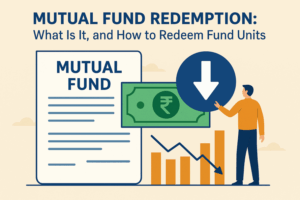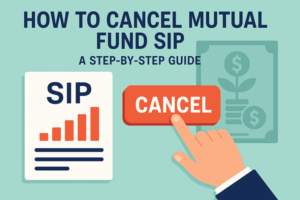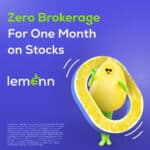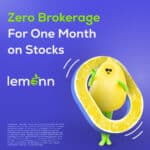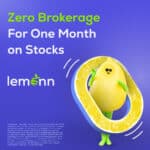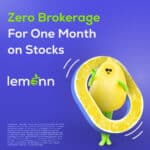SIP Calculator
×
ELSS Fund Lock-in Period: The Complete Guide
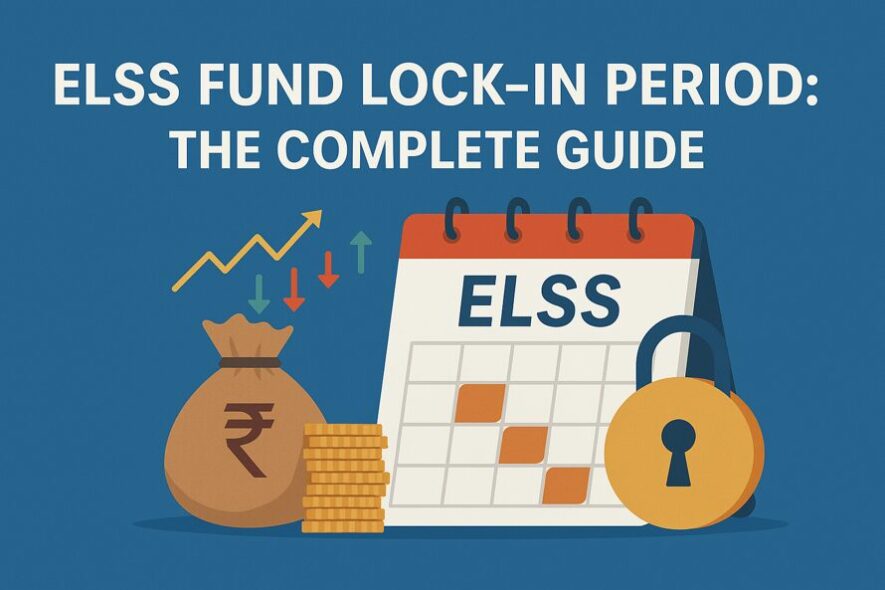
What is an ELSS (Equity Linked Saving Scheme)?
Every tax season, investors across India dust off calculators, scan HR portals, and ask the same question: “Where should I put my ₹1.5 lakh this year?” That’s when the alphabet soup of tax-saving tools, PPF, NSC, FD, ULIP, comes up. But among these, one option has remained an all-time favorite: the Equity Linked Saving Scheme (ELSS).
Why? Because ELSS offers the dual benefits of tax deductions and equity investments. Unlike traditional tax savers, it doesn’t just help you save taxes; it puts your money to work in the stock market.
Tax-Saving Mutual Fund Option Under Section 80C
ELSS is a type of mutual fund scheme that qualifies for tax savings under Section 80C of the Income Tax Act, 1961. That means you can invest up to ₹1.5 lakh in ELSS every year and reduce your taxable income. For a salaried employee, that translates into direct tax savings.
Unlike PPF or NSC, where the government fixes returns, ELSS returns are linked to the equity market. Historically, equities have beaten inflation and delivered superior wealth creation when held over a long period.
“Start investing with confidence! Explore the best
mutual funds
and grow your wealth.”
Investment in Equity and Equity-Linked Instruments
By design, ELSS invests at least 80% of its assets in equity or equity-linked securities. These could include large companies like Reliance or TCS, mid-sized growth firms, or even emerging small-cap companies. Fund managers create diversified portfolios, giving retail investors the opportunity to benefit from India’s economic growth without having to pick individual stocks.
Think of ELSS as a bridge: one side connects you to the familiar world of tax-saving, and the other leads you straight into the fast-moving world of equities.
What is the Lock-in Period in ELSS?
Whenever ELSS comes up, one phrase follows it like a shadow: lock-in period. For newcomers, it often sounds restrictive. But seasoned investors see it differently, as a built-in safety net that ensures money stays long enough to actually grow.
Duration of Lock-in: 3 Years
The lock-in period for ELSS is three years. That’s the minimum time your money must stay invested before you can redeem it. Compared to other 80C products, this is the shortest. PPF locks you in for 15 years, NSC and tax-saving FDs for 5 years, ULIPs for 5 years. ELSS? Just three.
This short lock-in is a game-changer. It’s long enough to give equities breathing room, but short enough to keep liquidity within sight.
Fixed vs Rolling Lock-in for SIP Investments
Here’s where many investors get tripped up. If you invest a lumpsum, your entire investment unlocks after three years. Simple. However, with a Systematic Investment Plan (SIP), each installment is treated as a separate investment.
For example, your SIP on January 1, 2025, will unlock on January 1, 2028. Your February SIP unlocks in February 2028, and so on.
Why SEBI Mandates a Lock-in for ELSS Funds
SEBI’s logic behind the lock-in is clear. Equity investing pays off when money stays invested. The lock-in ensures you don’t pull out funds at the first sign of market volatility. It also allows fund managers to invest without worrying about sudden redemption pressures. In short, the lock-in forces discipline that many investors would otherwise struggle to maintain.
How Lock-in Affects Your ELSS Investments
The lock-in period isn’t just a legal requirement. It shapes how you plan, how you manage liquidity, and how you view market risk.
No Premature Redemption Allowed
Once invested, your ELSS money is locked for three years. No redemptions, no switches, no premature exits. At first glance, this feels like a drawback. But here’s the twist: this very restriction protects you from panic-selling during market dips. Without an easy exit button, you end up doing the smartest thing: staying invested.
NAV Fluctuations During Lock-in
Even though you can’t redeem, your Net Asset Value (NAV) fluctuates daily in response to market performance. Sometimes, your portfolio may look fantastic; other times, not so much. But since you can’t touch it, NAV fluctuations become background noise. What matters is where your NAV stands three years later, not what it shows on a random Tuesday.
Impact on Investment Planning and Liquidity
Lock-in makes planning critical. You can’t use ELSS for short-term goals like buying a bike next year or paying school fees in two years. It’s best suited for medium- to long-term goals, retirement savings, kids’ education funds, or wealth building. Smart investors treat ELSS as a semi-liquid bucket: accessible after three years, but powerful enough to serve bigger goals.
SIP vs. Lumpsum: Lock-in Period Explained
Both SIP and lump sum work in ELSS. But the lock-in behaves differently.
Each SIP Installment Has a Separate 3-Year Lock-In
Think of each SIP as its own little investment with its own lock-in clock. If you start a ₹5,000 monthly SIP in January 2025 and run it for three years, you’ll see your first batch of units unlock in January 2028, then February 2028, and so on. By the time you hit the fourth year, your investments start unlocking in a chain reaction.
Planning Withdrawals for SIP Investments
This staggered unlocking isn’t a bug; it’s a feature. If you plan carefully, you can create a liquidity ladder. Once the first batch unlocks, you’ll have redeemable units every month. Many seasoned investors spread SIPs across multiple dates to maximize this effect, creating rolling liquidity after year three.
What Happens After the Lock-in Period Ends?
Crossing the three-year mark feels like crossing a finish line. But the real question then is: what next?
Redeem or Stay Invested – Evaluating Fund Performance
You now have full freedom. But that doesn’t mean you must exit. The decision depends on performance and goals. If the ELSS fund is beating benchmarks and your financial goals are still years away, staying invested might deliver even better results. Some investors hold ELSS for 7–10 years, treating it like a regular equity mutual fund.
Taxation on Redemption Post Lock-in
On redemption, long-term capital gains (LTCG) tax applies to ELSS investments. The LTCG exemption amount has been revised upward from Rs. 1 lakh to Rs. 1.25 lakh at the tax rate of 12.5%.
ELSS vs. Other 80C Instruments – Lock-in Comparison
When you line up all Section 80C instruments, ELSS often comes out ahead.
PPF, NSC, FD, ULIP vs ELSS Lock-in Periods
- PPF: 15 years, with partial withdrawals allowed only after year 7.
- NSC: Fixed 5-year lock.
- Tax-saving FDs: 5 years, no liquidity before that.
- ULIPs: 5 years, with added insurance costs.
- ELSS: 3 years, the shortest lock-in under Section 80C.
Returns and Flexibility Compared
Returns make a bigger difference. While the PPF interest rate is around 7% and the NSC yields about 7%, ELSS has delivered an average annual return of 12–15% over long horizons, depending on market conditions. And the option to partially redeem after three years adds unmatched flexibility.
Tips to Maximize ELSS During the Lock-in Period
The lock-in isn’t downtime. It’s a period you can use smartly.
Diversify SIP Dates for Liquidity Management
Instead of one fixed SIP date, spread them across the month. This creates multiple redemption windows later. Once the three-year mark is crossed, you’ll unlock units in batches, giving you steady liquidity.
Review Fund Performance Annually, Even During Lock-in
Lock-in means you can’t redeem, but it doesn’t mean you stop monitoring. Compare your ELSS fund’s returns with its benchmark and peers every year. If it lags consistently, you can stop new contributions and redirect future SIPs elsewhere, while letting locked units finish their term.
Conclusion
The ELSS lock-in period isn’t just a rule; it’s a feature that creates long-term discipline. With a short three-year lock, tax-saving benefits, and the growth potential of equities, ELSS remains one of the smartest Section 80C investments available today.
If you’re a first-time investor, it gives you equity exposure in a controlled, disciplined manner. For seasoned investors, it balances tax planning with wealth creation. And for everyone in between, it’s a reminder that sometimes, the best way to grow your money is to lock it up and let time work its magic.
FAQs:
Q. Can I withdraw ELSS funds before 3 years?
No, ELSS comes with a fixed three-year lock-in. You can’t redeem, switch, or pledge units during this time. The rule forces discipline and ensures money stays invested long enough for equities to work.
Q. How is the lock-in period calculated in SIP?
Each SIP installment has its own three-year clock. So, a January 2024 SIP unlocks in January 2027, February in February 2027, and so on. This rolling lock-in creates a ladder effect where liquidity starts flowing month by month after the first three years.
Q. What if the fund underperforms during the lock-in?
You can’t redeem early, but you can monitor performance. If a fund lags behind peers or benchmarks, stop fresh SIPs and redirect new contributions to stabler ELSS schemes. Existing units finish their lock-in while your new money works harder.
Q. Is ELSS suitable for short-term goals?
ELSS is meant for medium- to long-term investing. The lock-in itself makes it unsuitable for goals under three years. It works best for bigger targets like retirement, children’s education, or wealth building over 5–7 years.
Q. How does ELSS lock-in compare with PPF or FD?
ELSS has the shortest lock-in among Section 80C tools. PPF runs for 15 years, NSC and FDs lock money for 5 years, ULIPs too. At just 3 years, ELSS gives more flexibility while still enforcing discipline.
Q. Do I need to redeem my ELSS fund after 3 years?
No. Three years simply mark when you can redeem, not when you must. Many investors hold ELSS funds much longer if performance is strong. Treat the lock-in as a minimum entry ticket, not the final exit point.
Disclaimer
The stocks mentioned in this article are not recommendations. Please conduct your own research and due diligence before investing. Investment in securities market are subject to market risks, read all the related documents carefully before investing. Please read the Risk Disclosure documents carefully before investing in Equity Shares, Derivatives, Mutual fund, and/or other instruments traded on the Stock Exchanges. As investments are subject to market risks and price fluctuation risk, there is no assurance or guarantee that the investment objectives shall be achieved. Lemonn (Formerly known as NU Investors Technologies Pvt. Ltd) do not guarantee any assured returns on any investments. Past performance of securities/instruments is not indicative of their future performance.

